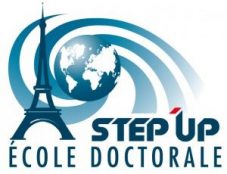Change of course content: An introduction to Machine Learning with Python:
Classification of satellite thermal infrared images
Overview:
This course is an introduction to remote sensing of the Earth surface in the thermal infrared domain from low-earth-orbit satellites and aims at learning how to implement a machine learning algorithm under Python environment, in order to classify thermal images, in the present case, to detect lakes. It will be delivered in the form of 10h (4 x 2,5h) of main lessons, merged with a training session (15h). This will consist of reading, manipulating and understanding the structure of satellite data products delivered from main archives, preparing the data set and implementing the algorithm of machine learning using Support Vector Machine under supervision and finally classify a data set after training.
Detail of the course agenda: https://cernbox.cern.ch/index.php/s/ZkxaQZQoF9a5X04
- Cécile Ferrari (Enseignant-chercheur, Université Paris Diderot)
- Dates et lieu: June 22-25, 2020
- course via Zoom and practicum via Big Blue Button https://bbb.physique.univ-paris-diderot.fr/b
- Registation code : ED-SPU13-STE13
- Validation: 4 points
Initial course, canceled due to low attendance: Characterizing natural surfaces: remote observations, modeling and inversion
Overview:
Remote sensing of planetary surfaces by satellites or spacecraft provides important clues on their properties, at global scale or/and high spatial resolution. They help following their structural and temporal evolution over days or years which may impact human activities and conditions of living or provide unique knowledge on unexplored extraterrestrial surfaces. Radiances originating from various depths in the near surface and measured over a large range of wavelengths, directions and timescales are modulated by its structure and composition. Heat and radiative transfer models have been developed to infer these properties from radiances.
This course aims at delivering skills in multi-wavelengths remote sensing and modeling of natural surfaces and at training participants in data inversion of satellite/spacecraft data from visible to the thermal/microwave infrared domain. It will be delivered in the form of 10h (5 x 2h) of main lessons, merged with a training session (15h=5*3h). This will consist of characterizing the properties of a specific surface among various solar system bodies such as the Moon, icy satellites of Saturn, etc, using databases from NASA missions mainly. This training includes data manipulation, model study (sensitivity analysis,…) and data inversion based on Bayesian inference under Python environment.
Informations:
- Cécile Ferrari (Enseignant-chercheur, Université Paris Diderot)
- Dates et lieu: June 22-25 2020 – 15h de travaux pratiques en salle informatique et 10h de cours magistral by video
- Langue : English
- Validation : 4 points
- Registation code : ED-SPU13-STE13
